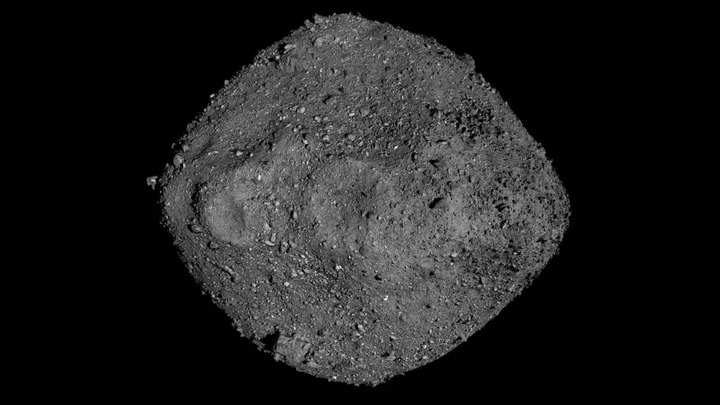NASA’s OSIRIS-REx carrying asteroid samples will return on Earth in September
NASA’s OSIRIS-REx spacecraft is adjusting its course and will return to Earth on September 24 with material from asteroid Bennu, according to mission officials.
Mission officials said that on July 26, OSIRIS-REx fired up its engines for about 63 seconds to slightly thrust itself onto a course closer to Earth. This trajectory correction manoeuvre is the final adjustment needed to set up its path towards Earth.
OSIRIS-REx, the first US mission to collect a sample from an asteroid, is travelling at a speed of about 35,000 kilometres per hour and is currently 38.6 million kilometres from Earth.
Read Also

“Preliminary tracking data indicates OSIRIS-REx changed its velocity, which includes speed and direction, by 1.3 miles, or 2 kilometres, per hour. It’s a tiny but critical shift; without course adjustments like this one the spacecraft would not get close enough to Earth on September 24 to drop off its sample of asteroid Bennu,” mission officials said.
OSIRIS-REx will do two more manoeuvres
Officials also said that two more manoeuvres – on September 10 and September 17 – will target the precise point in Earth’s atmosphere where the capsule with samples must enter to land on target at the Department of Defense’s Utah Test and Training Range near Salt Lake City.
Read Also

The material from Bennu, which includes rocks and dust collected from the asteroid’s surface in 2020, will offer generations of scientists a window into the time when the Sun and planets were forming about 4.5 billion years ago.
Meanwhile, the OSIRIS-REx team members have been practising collecting soil samples on the Department of Defense’s Utah Test and Training Range. On July 18-20, the team rehearsed retrieving a mock sample capsule at the location where the real one will land.
FacebookTwitterLinkedin
end of article

NASA’s OSIRIS-REx spacecraft is adjusting its course and will return to Earth on September 24 with material from asteroid Bennu, according to mission officials.
Mission officials said that on July 26, OSIRIS-REx fired up its engines for about 63 seconds to slightly thrust itself onto a course closer to Earth. This trajectory correction manoeuvre is the final adjustment needed to set up its path towards Earth.
OSIRIS-REx, the first US mission to collect a sample from an asteroid, is travelling at a speed of about 35,000 kilometres per hour and is currently 38.6 million kilometres from Earth.
Read Also

“Preliminary tracking data indicates OSIRIS-REx changed its velocity, which includes speed and direction, by 1.3 miles, or 2 kilometres, per hour. It’s a tiny but critical shift; without course adjustments like this one the spacecraft would not get close enough to Earth on September 24 to drop off its sample of asteroid Bennu,” mission officials said.
OSIRIS-REx will do two more manoeuvres
Officials also said that two more manoeuvres – on September 10 and September 17 – will target the precise point in Earth’s atmosphere where the capsule with samples must enter to land on target at the Department of Defense’s Utah Test and Training Range near Salt Lake City.
Read Also

The material from Bennu, which includes rocks and dust collected from the asteroid’s surface in 2020, will offer generations of scientists a window into the time when the Sun and planets were forming about 4.5 billion years ago.
Meanwhile, the OSIRIS-REx team members have been practising collecting soil samples on the Department of Defense’s Utah Test and Training Range. On July 18-20, the team rehearsed retrieving a mock sample capsule at the location where the real one will land.
FacebookTwitterLinkedin
end of article
